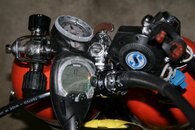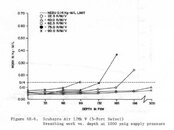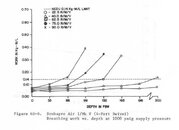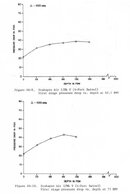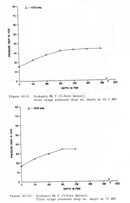halocline
Contributor
In the MK5 there's a turret, meaning air from the piston goes through a hollow bolt just to get to the LP ports. In the MK1, there's no turret bolt. That could affect flow easily as much as the direction of the flow out of the LP port, probably more.
But none of it really matters, the bottom line is that the 2nd stage can't flow anywhere near as much gas as the first stage can flow. It looks like the 2nd stage in the Navy tests was unbalanced, meaning much more sensitive to changes in IP. A balanced 2nd stage, especially a center-balanced valve like the D series with very little downstream bias, will tolerate much higher variances in IP with less cracking effort change. I think I've made this comment before on your thread about feeding a single 2nd stage from two tanks with two first stages.
Bottom line, I agree with the others. Unless the 1st stage is really lacking in flow capacity, at anything even close to recreational diving depths, with a single diver breathing off a regulator, the 2nd stage determines the breathing characteristics.
But none of it really matters, the bottom line is that the 2nd stage can't flow anywhere near as much gas as the first stage can flow. It looks like the 2nd stage in the Navy tests was unbalanced, meaning much more sensitive to changes in IP. A balanced 2nd stage, especially a center-balanced valve like the D series with very little downstream bias, will tolerate much higher variances in IP with less cracking effort change. I think I've made this comment before on your thread about feeding a single 2nd stage from two tanks with two first stages.
Bottom line, I agree with the others. Unless the 1st stage is really lacking in flow capacity, at anything even close to recreational diving depths, with a single diver breathing off a regulator, the 2nd stage determines the breathing characteristics.




